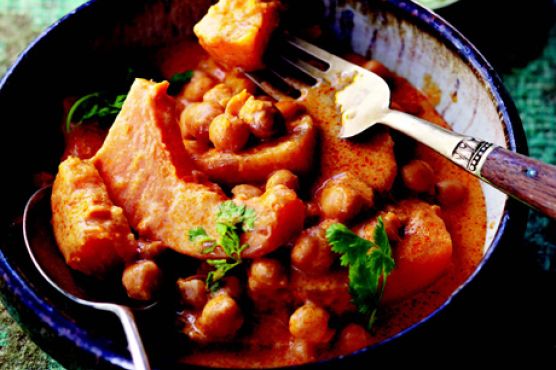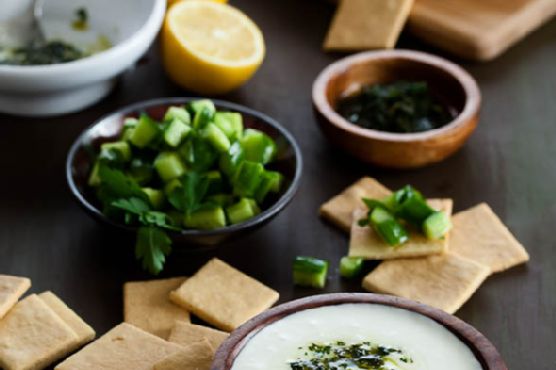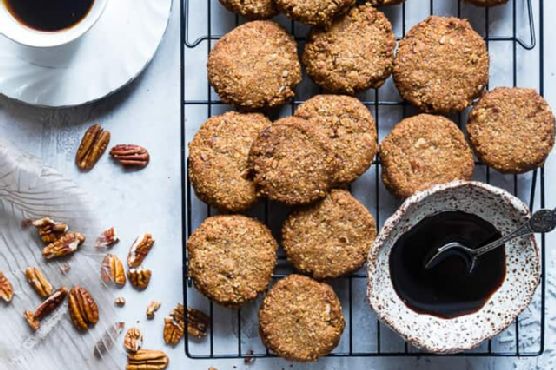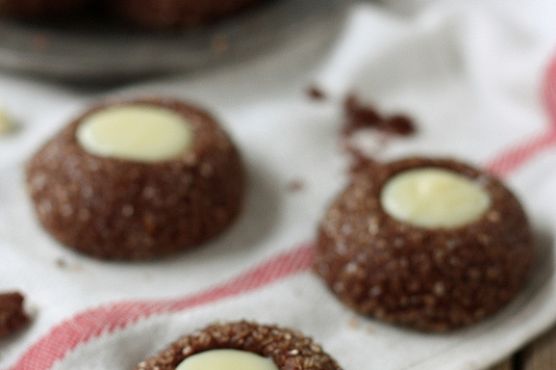Thai Red Curry with Butternut Squash and Chickpeas
Thai Red Curry with Butternut Squash and Chickpeas might be just the Indian recipe you are searching for. This recipe serves 4. One portion of this dish contains about 10g of protein, 33g of fat, and a total of 492 calories. For $1.59 per serving, this recipe covers 28% of your daily requirements of vitamins and minerals. A mixture of unsweetened coconut milk, canned chickpeas, canolan oil, and a handful of other ingredients are all it takes to make this recipe so yummy. It works best as a side dish, and is done in around 45 minutes. 1100 people have made this recipe and would make it again. It is a good option if you're following a gluten free, dairy free, lacto ovo vegetarian, and vegan diet. It is brought to you by Epicurious. Overall, this recipe earns a super spoonacular score of 93%. Similar recipes are Thai Butternut Squash Red Curry, Thai Chicken Salad with Red Curry Butternut Squash, and Curry-Roasted Butternut Squash and Chickpeas.
Servings: 4
Preparation duration: 10 minutes
Cooking duration: 35 minutes
Ingredients:
1 small butternut squash (about 2 pounds)
1 15-ounce can chickpeas (garbanzo beans), drained and rinsed
2 tablespoons canola oil
1/3 cup fresh cilantro, plus more for garnish
Kosher salt
1/3 cup Thai red curry paste
1 13-ounce can unsweetened coconut milk
Equipment:
pot
bowl
Cooking instruction summary:
Preparation 1. Peel the squash, cut it lengthwise in half, and scoop out the seeds. Cut off the top where it meets the bulbous bottom. Cut the bulb end into 3/4-inch-wide wedges. Cut the neck end into 1/2-inch-thick half-moons. 2. Heat a large heavy pot over medium-high heat. Add the canola oil, then addthe curry paste and stir for about 1 minute, or until fragrant. Add the squashand stir to coat with the curry paste. Stir in the chickpeas and season withsalt. Add the coconut milk and 3/4 cup water and bring to a simmer. Reducethe heat to medium-low, cover, and simmer gently for about 10 minutes, oruntil the squash just begins to soften. 3. Stir in the cilantro and simmer, uncovered, stirring occasionally, for about 20 minutes, or until the squash is tender but not falling apart and the sauce has reduced slightly. Season to taste with salt. 4. Divide the curry among four soup bowls, top with cilantro, and serve. Spice It Up Have you noticed the number of new spices on the market? Seasonings that you used to haveto bring back home from a trip abroad are now for sale at the local grocer. Spice blends, which can come inpowdered or paste form, are made up of a long list of ingredients, so you get a huge amount of flavor in everyspoonful. Two of my favorites are Morocco’s harissa (a fiery paste made from chilies, garlic, cumin, coriander,caraway, and olive oil) and Thai red curry paste (containing red chilies, lemongrass, cilantro, and more). Refrigeratethese in their containers after opening, and they will keep for at least 6 months. Reprinted with permission from What's for Dinner? by Curtis Stone, © 2013 Ballantine BooksCurtis Stone is the author of five cookbooks and host of Top Chef Masters on Bravo. He is also the creator of Kitchen Solutions, a sleek line of cookware sold in retailers worldwide, and writes a monthly column for Men's Fitness. Born in Melbourne, Australia, Stone honed his skills in London at Café Royal, under legendary three-star Michelin chef Marco Pierre White, and at Mirabelle and the revered Quo Vadis. He lives in Los Angeles with his wife and son.
Step by step:
1. Peel the squash, cut it lengthwise in half, and scoop out the seeds.
2. Cut off the top where it meets the bulbous bottom.
3. Cut the bulb end into 3/4-inch-wide wedges.
4. Cut the neck end into 1/2-inch-thick half-moons.
5. Heat a large heavy pot over medium-high heat.
6. Add the canola oil, then addthe curry paste and stir for about 1 minute, or until fragrant.
7. Add the squashand stir to coat with the curry paste. Stir in the chickpeas and season withsalt.
8. Add the coconut milk and 3/4 cup water and bring to a simmer. Reducethe heat to medium-low, cover, and simmer gently for about 10 minutes, oruntil the squash just begins to soften.
9. Stir in the cilantro and simmer, uncovered, stirring occasionally, for about 20 minutes, or until the squash is tender but not falling apart and the sauce has reduced slightly. Season to taste with salt.
10. Divide the curry among four soup bowls, top with cilantro, and serve.
11. Spice It Up
12. Have you noticed the number of new spices on the market? Seasonings that you used to haveto bring back home from a trip abroad are now for sale at the local grocer. Spice blends, which can come inpowdered or paste form, are made up of a long list of ingredients, so you get a huge amount of flavor in everyspoonful. Two of my favorites are Morocco’s harissa (a fiery paste made from chilies, garlic, cumin, coriander,caraway, and olive oil) and Thai red curry paste (containing red chilies, lemongrass, cilantro, and more). Refrigeratethese in their containers after opening, and they will keep for at least 6 months.
13. Reprinted with permission from What's for Dinner? by Curtis Stone, © 2013 Ballantine Books
14. Curtis Stone is the author of five cookbooks and host of Top Chef Masters on Bravo. He is also the creator of Kitchen Solutions, a sleek line of cookware sold in retailers worldwide, and writes a monthly column for Men's Fitness. Born in Melbourne, Australia, Stone honed his skills in London at Café Royal, under legendary three-star Michelin chef Marco Pierre White, and at Mirabelle and the revered Quo Vadis. He lives in Los Angeles with his wife and son.
Nutrition Information:
covered percent of daily need















